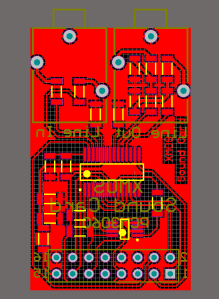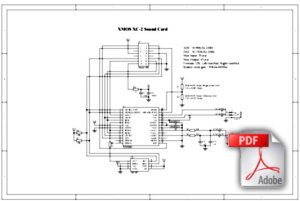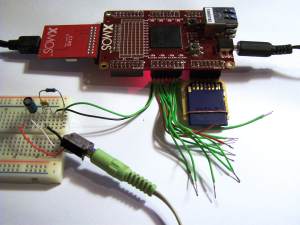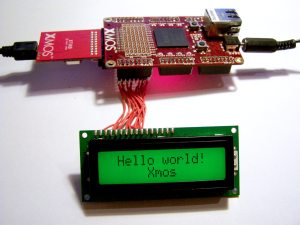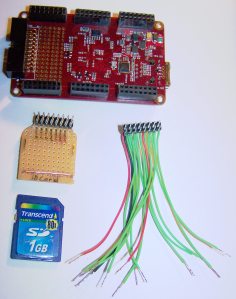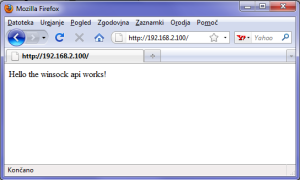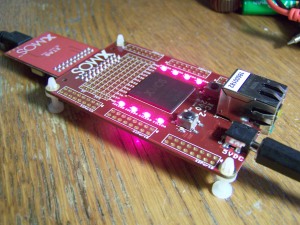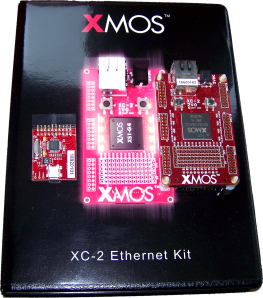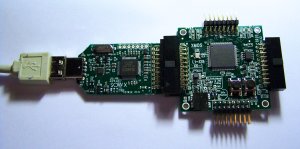 Today i got something special in the mail. A cute little XK-1 development board and a XTAG2 debuger to go with it. I won this thing on the xcore exchange forums as part of the activity points based giveaway.
Today i got something special in the mail. A cute little XK-1 development board and a XTAG2 debuger to go with it. I won this thing on the xcore exchange forums as part of the activity points based giveaway.
So what is this board. Its heart is the XS1-L1A chip, that is a single core 400MIPS processor with 8 threads and 64K of memory. Along on the board there are 4 LEDs and 2 pushbuttons that are wired to the I/O pins. There are also two expansion headers that bring out the I/O and power supply. The main feature of the board is the connector on the other side of the programmer. It allows multiple boards to be stacked together to connect over xlinks and share power. This way you can expand the system with ease.
